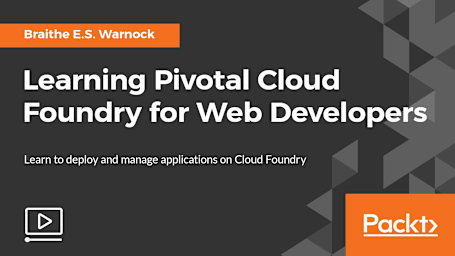
Learning Pivotal Cloud Foundry for Web Developers
To date, organizations have adopted PCF because it acts as an abstraction layer on public and private cloud IaaS providers, increasing business agility and time-to-market of software products. This course kicks off by showing you the steps involved in making your application cloud-ready. Moving on, it delves into the various aspects involved in deploying your application and running it on Cloud Foundry. It also shows you how Spring Boot and PCF tremendously increase developer productivity. Later, we address the core challenges that Java developers face while developing PCF applications, such as understanding what PCF is and why companies adopt it. Then, it shows you how to quickly bootstrap and deploy various micro-services to PCF, including REST web services and event-driven applications. At the end of this video course, you'll learn how to set up your work space, and its architecture, develop a web service application, and deploy it to PCF. You'll also build a micro-service (event-driven) and deploy it to Cloud Foundry. Style and Approach: This course will walk you through the features of Cloud Foundry along with a few projects, which will help you understand the basic concepts of setting up a work space, working with Orgs and spaces, monitoring applications and logs, leveraging auto-configuration for PCF, and developing a Spring Boot application to run in production environments.
Target Audience
This course is for developers and administrators who are dealing with Cloud Foundry in the production phase. Basic knowledge of Cloud Foundry is required to get you started with application deployment.
Business Outcomes
- Gain hands-on experience of using Cloud Foundry in production
- Discover spring-boot auto-configuration and develop PCF native Spring Boot applications
- Deploy, manage, and scale applications in your cloud







